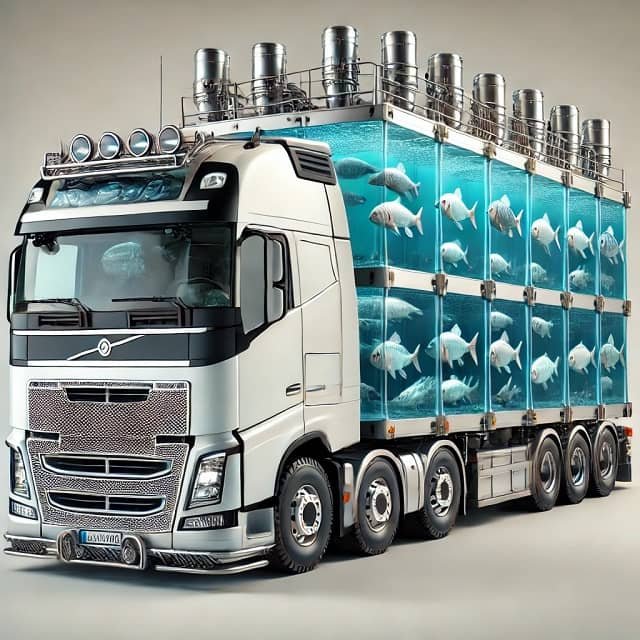
For many, vibrant freshwater aquariums are a source of tranquil beauty. However, a recent study reveals a potential concern lurking beneath the surface: the routine use of antibiotics in retail stores of ornamental fish.
Researchers from Hong Kong Metropolitan University and The Hong Kong Polytechnic University analyzed the concentrations of twenty antibiotics in transport water (which also comes from tanks in retail stores) collected monthly from ten retail ornamental fish stores in Hong Kong over a three-month period. They also analyzed the impact of antibiotics on microbial communities within these stores.
The ornamental fish trade: a global business
- 1 The ornamental fish trade: a global business
- 2 Routine use of antibiotics in ornamental fish
- 3 Investigating the antibiotic landscape in retail stores
- 4 A cocktail of antibiotics detected
- 5 A cause for concern: Are zoonotic pathogens on the rise?
- 6 A call to action: responsible use of antibiotics
- 7 Conclusion
- 8 Entradas relacionadas:
The ornamental fish trade is a booming industry, valued between $15 billion and $30 billion annually. Hong Kong, a major player in this market, imports fish from various countries to meet the demands of its numerous fish enthusiasts.
Routine use of antibiotics in ornamental fish
The breeding tanks of ornamental fish in retail stores often house thousands of fish in confined spaces, creating a stressful environment. This stress weakens their immune systems, making them susceptible to bacterial infections such as streptococcosis and mycobacteriosis.
To combat this issue, retailers often resort to prophylactic antibiotics: antibiotics administered to prevent disease outbreaks. However, these drugs are sometimes also used as a preventive measure. This widespread practice, particularly when antibiotics are used excessively or in suboptimal doses, can create ideal conditions for the development of antibiotic-resistant bacteria.
These “superbugs” become increasingly difficult to treat with conventional antibiotics, posing a significant threat to both fish health and human health.
Investigating the antibiotic landscape in retail stores
The widespread use of antibiotics in the ornamental fish industry has driven the emergence of antibiotic-resistant bacteria (ARB) and antibiotic resistance genes (ARGs) worldwide.
While the issue of antibiotic resistance in the ornamental fish industry has received less attention compared to other aquaculture areas (since these fish are not for human consumption), it is crucial to address it.
Stay Always Informed
Join our communities to instantly receive the most important news, reports, and analysis from the aquaculture industry.
The study focused on understanding the antibiotic situation in retail ornamental fish stores. Researchers collected water samples used in fish transport from ten different stores over a three-month period. These samples were analyzed for the presence of 20 different antibiotics and the composition of microbial communities within the water using a powerful technique called 16S rRNA gene sequencing.
The researchers also assessed the risk of selecting antibiotic-resistant bacteria by comparing the detected antibiotic levels with established safety thresholds.
A cocktail of antibiotics detected
The results revealed a concerning presence of antibiotics in the sampled water. The study found the following results:
- Tetracyclines were the most frequently detected class of antibiotics, followed by fluoroquinolones and macrolides.
- Particularly high concentrations of oxytetracycline (ranging from 44.3 to an astonishing 2,262,064.2 ng L-1) were found in most stores during the sampling period.
- These concentrations were deemed to pose a high risk for selecting antibiotic-resistant bacteria.
A cause for concern: Are zoonotic pathogens on the rise?
The high concentrations of antibiotics, particularly oxytetracycline, suggest a significant risk of promoting the development of antibiotic-resistant bacteria in retail store environments.
The study also identified a worrying connection. The presence of zoonotic pathogens, bacteria capable of infecting humans, was positively correlated with specific antibiotics like oxytetracycline and enrofloxacin. This suggests that the use of antibiotics in retail stores could inadvertently increase the chances of selecting zoonotic pathogens.
A call to action: responsible use of antibiotics
These findings highlight the urgent need for better antibiotic stewardship within the ornamental fish retail industry. This includes:
- Raising awareness under the “One Health” approach among store owners and employees about the risks of excessive antibiotic use.
- Promoting preventive and alternative treatment methods for fish diseases.
- Implementing stricter regulations on the sale and use of antibiotics in the ornamental fish trade.
Conclusion
“To protect public health and preserve effective therapies, we recommend monitoring and regulating the use of antibiotics in ornamental fish stores. Overall, this study confirmed the widespread application of antibiotics in ornamental fish stores and highlighted the risks associated with the selection of antibiotic-resistant pathogens,” the researchers conclude.
More research is needed to explore alternative treatment options for ornamental fish and develop better practices for the responsible use of antibiotics within the industry. By promoting responsible practices and fostering collaboration, we can create a thriving ornamental fish sector that prioritizes both the health of our fish and the well-being of ourselves and the environment.
The study was funded by Hong Kong Metropolitan University.
Reference (open access)
Lam, K., Choi, M., Chan, K., Cheung, Y., Tsui, Y., & Mo, W. (2024). Impact of Prophylactic Antibiotic Use in Ornamental Fish Tanks on Microbial Communities and Pathogen Selection in Carriage Water in Hong Kong Retail Shops. Microorganisms, 12(6), 1184. https://doi.org/10.3390/microorganisms12061184
Editor at the digital magazine AquaHoy. He holds a degree in Aquaculture Biology from the National University of Santa (UNS) and a Master’s degree in Science and Innovation Management from the Polytechnic University of Valencia, with postgraduate diplomas in Business Innovation and Innovation Management. He possesses extensive experience in the aquaculture and fisheries sector, having led the Fisheries Innovation Unit of the National Program for Innovation in Fisheries and Aquaculture (PNIPA). He has served as a senior consultant in technology watch, an innovation project formulator and advisor, and a lecturer at UNS. He is a member of the Peruvian College of Biologists and was recognized by the World Aquaculture Society (WAS) in 2016 for his contribution to aquaculture.




